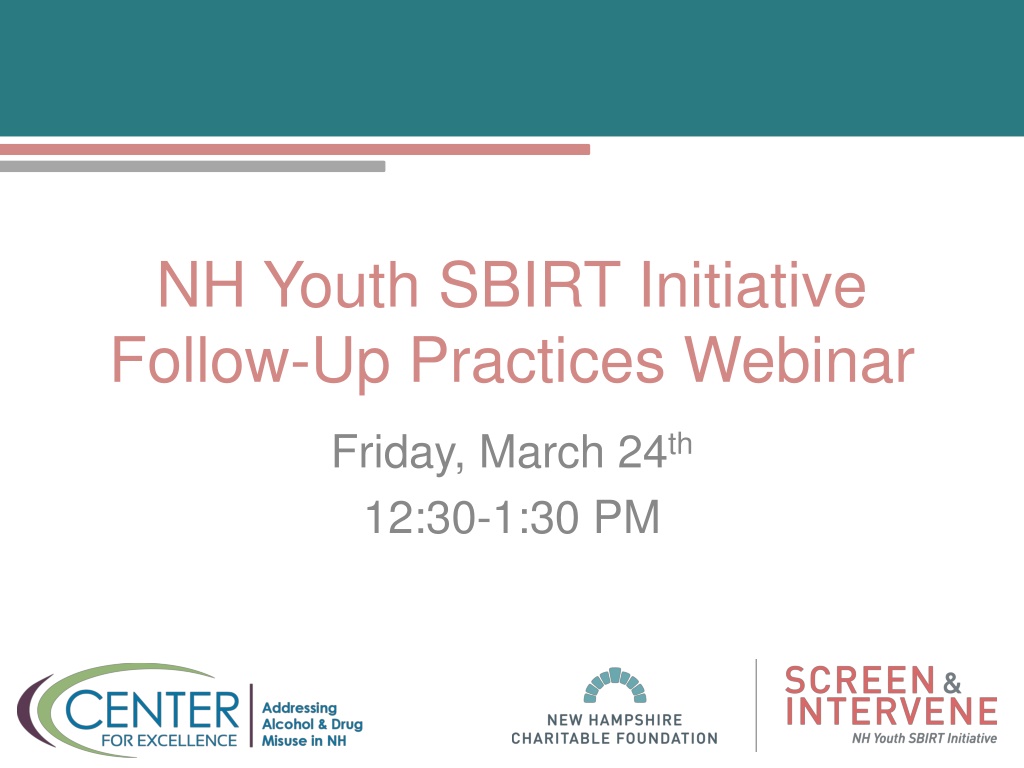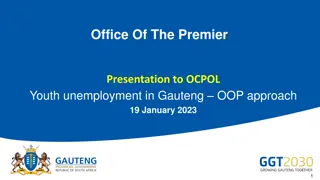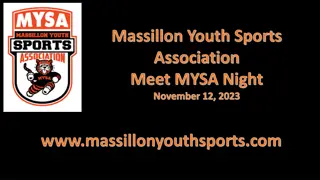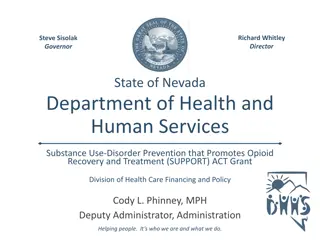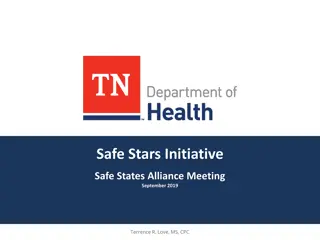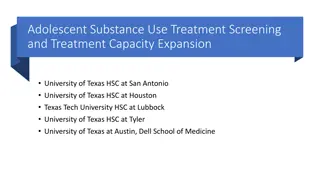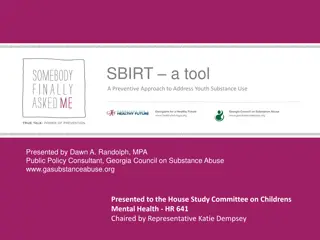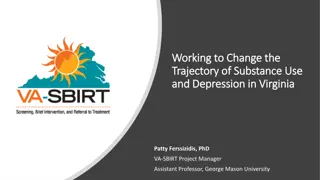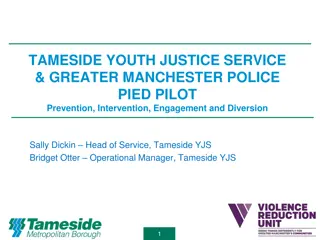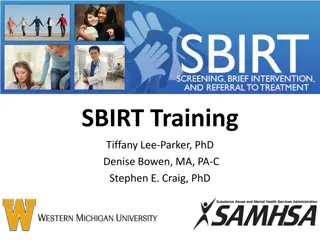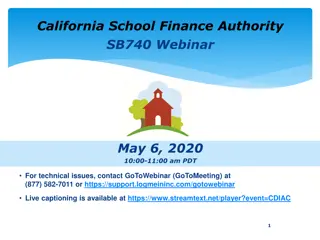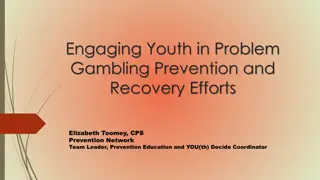NH Youth SBIRT Initiative Follow-Up Practices Webinar Overview
This webinar discusses the follow-up practices of the NH Youth SBIRT Initiative. Topics include defining follow-up, referral to treatment processes, recommended approaches, 2016 year-end assessment results, activities supporting referrals, and the development of new relationships and partnerships. Strategies and discussions are shared to enhance patient contact closure and proactive outreach in primary care practices.
Download Presentation

Please find below an Image/Link to download the presentation.
The content on the website is provided AS IS for your information and personal use only. It may not be sold, licensed, or shared on other websites without obtaining consent from the author. Download presentation by click this link. If you encounter any issues during the download, it is possible that the publisher has removed the file from their server.
E N D
Presentation Transcript
NH Youth SBIRT Initiative Follow-Up Practices Webinar Friday, March 24th 12:30-1:30 PM
Agenda Overview of Follow Up 2016 Year-end assessment: Aggregated responses Deeper Dive: Individual practice sites follow up management strategies Sharing Strategies and Discussion
Definition of Follow-up Follow Up refers to any contact with a patient that closes the loop with the primary care practice. positive screen proactive outreach protocols
Referral to Treatment A well-planned process through which a healthcare professional provides an active referral to behavioral health resources within or outside of the provider s organization for evaluation and diagnosis
Recommended Approach to Following Up Identify patients need to be followed up, for what, and by whom. Determine how you will follow up Ensure referrals can be tracked in your system.
2016 YEAR-END ASSESSMENT: AGGREGATED RESPONSES
Results from 2016 Year End Assessment January 9th to March 3rd, 2017 35-item survey to all grantees assess the status of S BI RT implementation among practice sites, document lessons learned, and identify common issues across practice sites to focus technical assistance for the remainder of the initiative. Data re93% of sites
Activities or mechanisms that support referral to treatment 77% In-house BH provider 69% External referral relationships 54% Treatment Locator 38% Addiction Crisis Line 38% EHR Adoptions 23% Regional Access Points 0% 20% 40% 60% 80% 100%
Relationships and Partnerships 69% of implementers have developed new relationships or partnerships with other organizations related to S BI RT. These organizations include: Student Assistance Program (SAP s) Counselors Behavioral Health Providers Treatment Centers Internal Behavioral Health Providers Other PCP offices
Follow Up Protocols EHR Support Registry Follow up appointments and patient alerts in the EHR Positive screens are pulled up in a recall report to determine if follow up has taken place Chart Plan documentation protocols and referral tracking in EHR Depending on intervention needed, follow up 1 month initially We have a guideline for identification and management of perinatal SUD. Still working on this.
How follow-up action is documented in the EHR Notes/text Field 46% Reminders/Recalls 38% Patient Alerts 31% Other 23% Best Practice Advisories 15% 0% 20% 40% 60% 80% 100%
DEEPER DIVE: HOW DO INDIVIDUAL PRACTICE SITES MANAGE FOLLOW-UP?
General Issues Related to F/U Dependent on: Diagnosis Some diagnoses (e.g., TB or lead) have protocols in place Risk to the Public/Patient (e.g., highly contagious disease or poisoning) Capacity of the patient/family Provider preferences/variation within a practice
Who is doing follow-up? General Response: Most of the time follow up is done with MA, nurse or front desk staff by phone, and by letter. In some cases, care coordinators are providing more intense follow-up. SBIRT Response: Depending on risk level and readiness, the follow up is largely done at the next visit.
How do practices close-the-loop? For both General and SBIRT Referrals are sent through EHR or Referring provider s practice sends information to specialist by phone, fax or letter Staff (including MA or nurse) provides information for patient to follow up the end of visit
Where are practices tracking referrals? Referrals are entered in EHR to where they are sent In integrated health systems client files are shared so status is updated automatically
BARRIERS AND CHALLENGES Practice level Patient/Family Specialists/Partners
Barriers and Challenges Practice -level Lack of time and other resources Workforce shortage Increased acuity with patients (decrease provider productivity) Time spent to track and reschedule no shows Variation in provider preferences/practices Lack of protocols Stigma [ EHR is forever ] Data re: referrals in phone notes or narrative difficult to track Lack of mechanism to note if patient is already in treatment or declined referral
Barriers and Challenges Patient/Family Lack of Readiness/adherence Patients fail to follow through with referral Not the same pressure to F/U as when need meds Communication Phone numbers change/get shut off
Barriers and Challenges: Specialists/Partners Shortage of resources to refer for high-intensity therapy Protocols vary by organization/agency Some small specialist practices don t have staff or EHR Some specialists only close loop on initial visit, but not if ongoing relationship HIPAA/42 CFR Part A privacy protection vs. continuity of care Mental Health/Behavioral Health entirely different system you never know what MH is up to with patients, like you do with cardiology, for example Burden is on PCP to close the loop on referrals
ENABLERS AND FACILITATORS EHR Staffing Strategies Protocols in Place Strong Standing Relationships
Enablers/Facilitators: EHR Shared EHR: In integrated practices all clinicians can access patient records With external providers For documenting/tracking Automatic provider reminders Expired order when patient doesn t show up Set reminders after 2-3 months to F/U
Enablers/Facilitators: Staffing strategies Team-based care PCP/MA dyad Maximize roles/scope of work Care coordinators Community Health Workers Referral Coordinators Referral Clinics School-based clinicians
Enablers/Facilitators: Protocols in Place E.g., For sick child visits, RN calls 48 hrs later to check on pt Phone f/u Catch Missed opportunities at subsequent visits Referral coordinators follow up directly with patient Phone call/letter/certified letter Staff member at desk with patient needing referral asks patient to call specialist Referral specialists receive electronic message all docs exchanged (consultant report, quality report, outstanding referrals Call patients to remind about appointments the day before Warm hand-offs/same visit Asking BH (referred to) to contact patient Internal: BH Consultants outreach after 2 weeks high risk patients usually make arrangements to allow communication With some conditions, patients need meds refilled or school health forms, so built in mechanism to keep n touch
Enablers/Facilitators: Strong standing relationships With patients With partner organizations (referrals)
Sharing Strategies What are ways your practice is working to increase compliance with follow-up appointments? How is your practice closing the loop on referrals and F/U? How do you increase your patients engagement in their care? How does your practice deal with confidentiality in regard to follow-up? How does your practice get information from phone notes?
